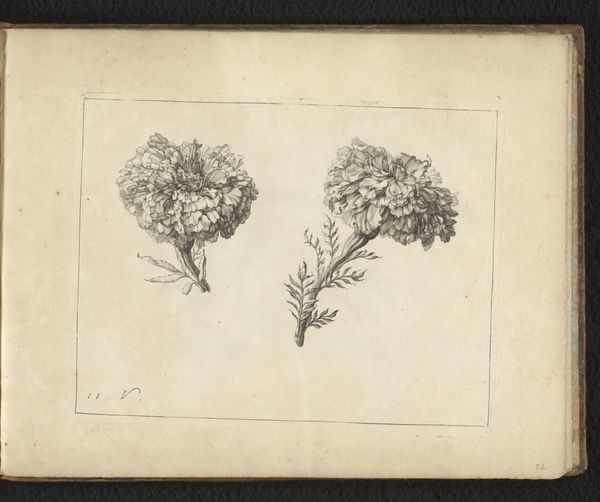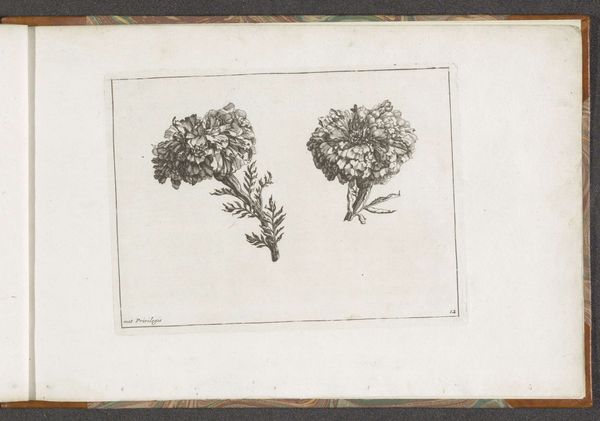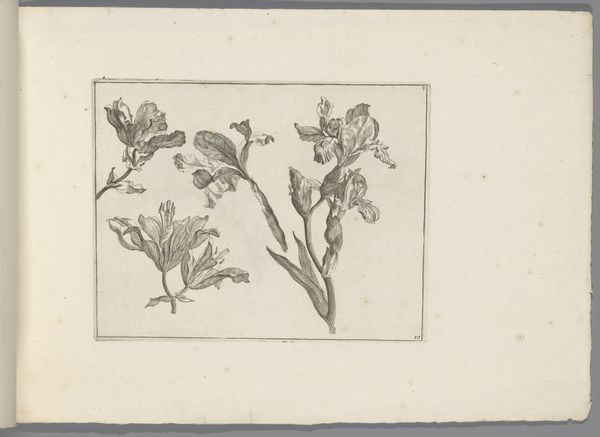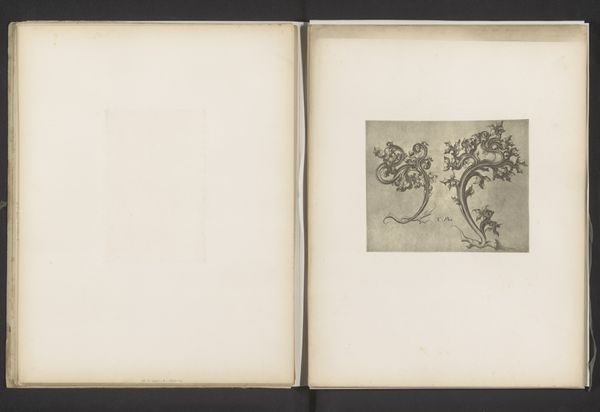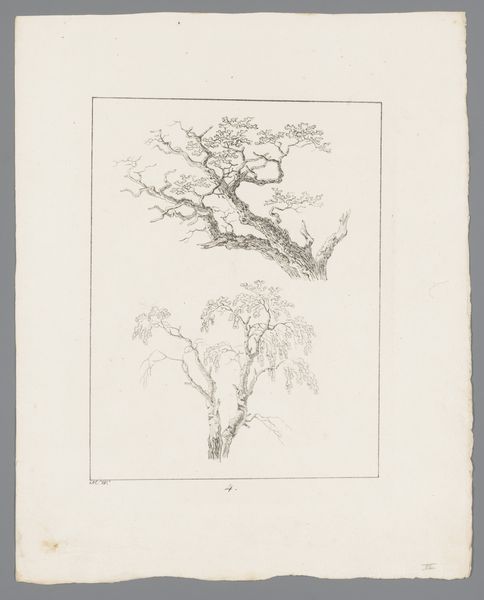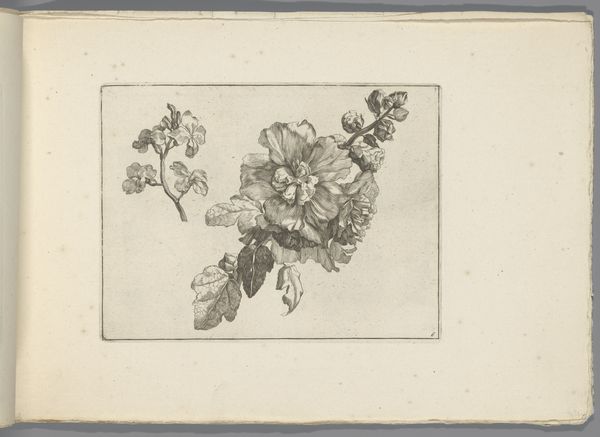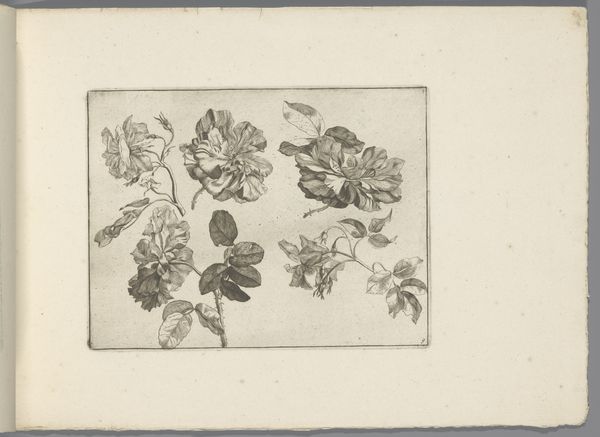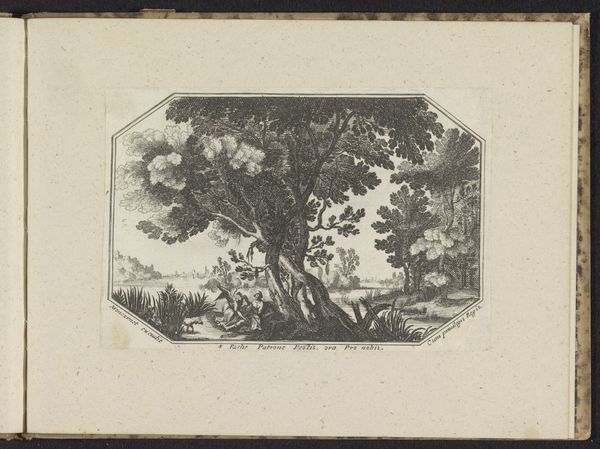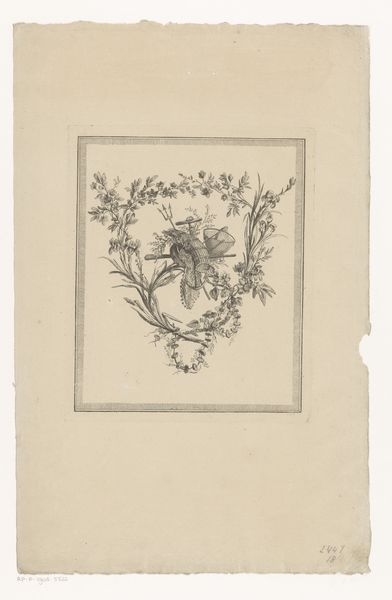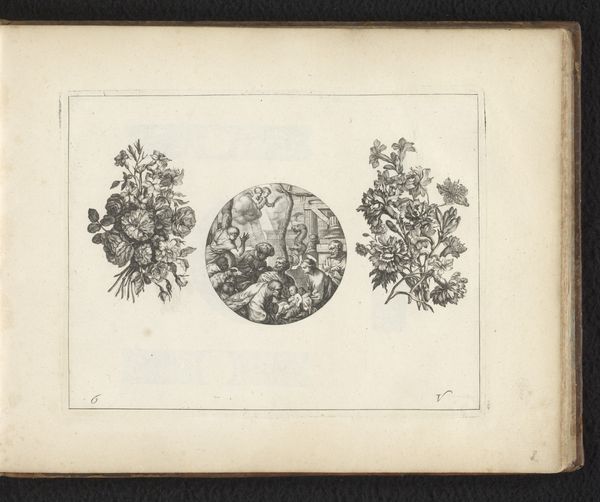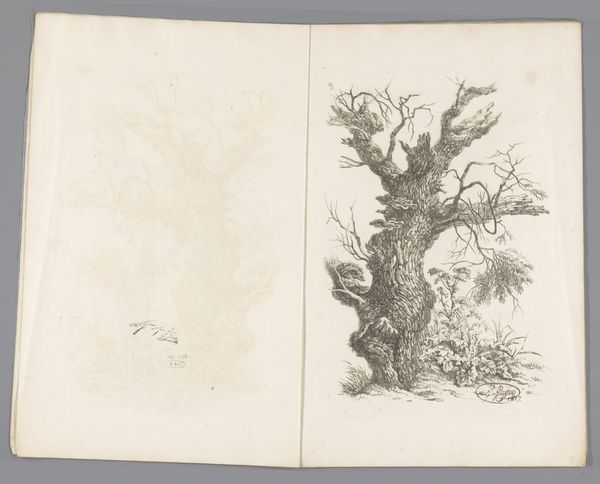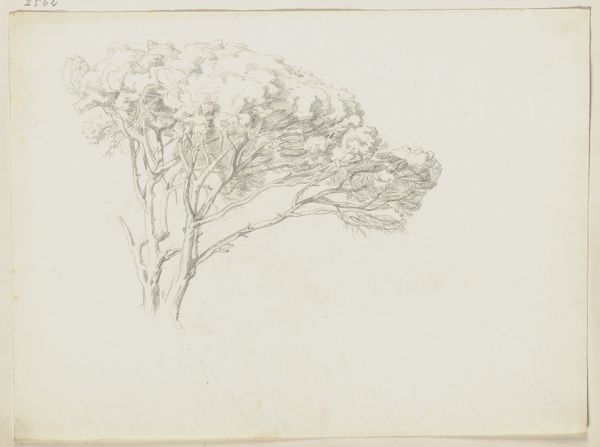
drawing, paper, ink
#
drawing
#
ink paper printed
#
paper
#
ink
#
plant
#
realism
Dimensions: height 137 mm, width 176 mm
Copyright: Rijks Museum: Open Domain
Curator: Immediately, I am struck by the intense detail rendered in what appears to be a rather simple composition. Editor: Indeed. What we're looking at here is "Pioenrozen", or "Peonies," by Gerard Valck, created sometime between 1670 and 1726. It's an ink drawing on paper, now held at the Rijksmuseum. Curator: Valck has chosen a fairly straightforward depiction; these flowers, presented in monochrome, have a rather subdued visual impact, wouldn't you say? What does that say about Dutch tastes during that era, given that these drawings were printed? Editor: Perhaps what seems straightforward is a testament to the burgeoning scientific illustration trends of the late 17th century. The focus shifted to empirical observation and meticulous representation. Flowers themselves were powerful cultural symbols, reflecting prosperity and good taste. Disseminating images like these democratized access to visual culture. Curator: That’s compelling. Peonies have always been freighted with meaning, signifying wealth and honor across cultures. Seeing them rendered with such fine detail on paper underscores a sense of fleeting beauty captured, wouldn't you agree? They’re almost like botanical portraits. Editor: Absolutely. Valck isn’t merely documenting; he’s imbuing these flowers with a symbolic weight. These are, after all, prints; part of a larger, possibly commercial project meant for circulation. It's less about personal expression and more about contributing to a collective visual understanding of the natural world. Curator: And yet, within the apparent simplicity lies an almost meditative quality. Editor: I find myself thinking about who saw this image, how, and in what context. That in itself seems telling about the intersection of art and everyday life. Curator: Ultimately, these modest yet potent images serve as reminders of how our understanding of beauty and knowledge has been shaped by what we choose to represent and how we choose to share it. Editor: And how what may initially seem like a simple botanical sketch can unfold to reveal much larger cultural forces at work.
Comments
No comments
Be the first to comment and join the conversation on the ultimate creative platform.
